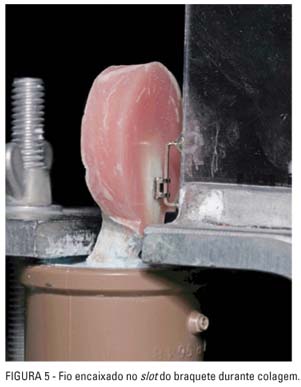AIM: The purpose of this study was to evaluate the shear bond strength of orthodontic bonding with the use of a hydrophilic primer (Transbond Moisture-Insensitive Primer, 3M Unitek, Monrovia, Calif.), a self-etching primer (Transbond Plus Self-etching Primer, 3M Unitek, Monrovia, Calif.) and without primer application, in dry and saliva contaminated enamel surfaces. METHODS: Bovine incisors (60) were divided into 6 groups: (1) uncontaminated control (no primer), (2) control with saliva contamination (no primer), (3) uncontaminated self-etching primer, (4) saliva contamination before self-etching primer, (5) uncontaminated hydrophilic primer and (6) saliva contamination before hydrophilic primer. Stainless steel brackets were bonded with composite resin (Transbond XT, 3M Unitek, Monrovia, Calif.). After bonding, all samples were stored at 37±1°C in a humidity environment until the shear bond strength test. RESULTS: Under dry uncontaminated enamel conditions comparable results were found between the control (1) and the self-etching primer (3), while the hydrophilic primer (5) presented higher bond strength. Under saliva contamination, a significant difference was found between the control (2) and the self-etching primer (4), however, there was no difference between the self-etching primer (4) and the hydrophilic primer group (6). CONCLUSION: Therefore, with moisture control, the use of a primer in order to achieve acceptable bond strength is not required. In clinical situations where there is a risk of saliva contamination either primer could be used.
Adhesives; Composite; Bond strength; Saliva; Dental enamel








